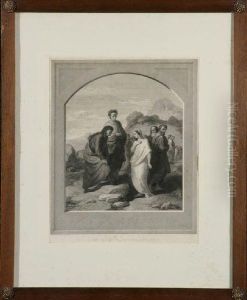Edoardo Chiossone Paintings
Edoardo Chiossone was an Italian engraver and painter, born in Arenzano, Genoa on 20 June 1833. He is particularly notable for his significant contribution to Japanese arts during the Meiji period. He was trained in engraving in his home city of Genoa and subsequently moved to Florence, where he worked at the National Printing Institute.
In 1875, Chiossone was invited to Tokyo by the Japanese government to modernize the country's minting and printing techniques. His arrival in Japan coincided with the Meiji Restoration, a period of rapid modernization and Westernization. Chiossone played a vital role in this era, bringing European engraving techniques to Japan and working on the design and production of Japanese banknotes and stamps.
Beyond his technical contributions, Chiossone was deeply immersed in the study and collection of Japanese art. He amassed a significant collection of ukiyo-e prints, armor, swords, ceramics, and other artifacts. His dedication to the culture was such that he was one of the few Westerners at the time to be accepted and respected within Japanese artistic circles.
Chiossone remained in Japan for the rest of his life, never returning to Italy. His work had a lasting impact on Japanese art and engraving, and he is remembered as a bridge between the two cultures. After over two decades in Japan, Edoardo Chiossone died on 23 April 1898 in Tokyo. His extensive art collection was later purchased by the city of Genoa and is housed in the Museo d'Arte Orientale Edoardo Chiossone, which stands as a testament to his life and work.
